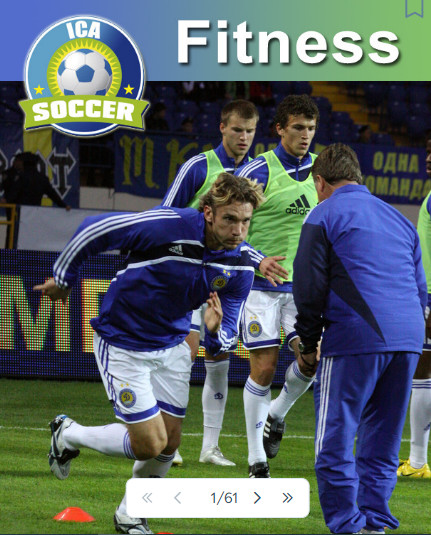Resistance to the effects of fatigue can only be accomplished through intensive, vigorous training that overloads the energy production systems.
Several methods of training will be discussed in this section.
They are: Continuous Running, Circuit Training, Interval Training, Fartlek Training, Acceleration Running, and Strength Training.
Each method of training adheres to the basic training principles discussed in the "Training Principles" of the Physiology section.
Each method can be used at some time in a training program for soccer.
Some methods are designed to induce aerobic adaptations, and others anaerobic adaptations.
The soccer player needs aerobic energy to be able to play a full game and thee need anaerobic conditioning for intense sprint work, thus they can benefit from all of the methods described in this section.
The player needs to make periodic checks on the intensity they are working at, especially when starting a program, or using training methods which designate specific work intensities.
There is a direct relationship between exercise intensity and heart rate, so the intensity of work can be determined by measuring the athlete’s heart rate immediately after exercise.
To check exercise heart rates stop exercising and immediately measure heart rate by counting the heart beats or pulses for 10 to 15 seconds and multiplying by 6 or 4, respectively, to get a value of beats per minute.
The pulse can easily be felt by applying slight pressure with the fingertips (not the thumb as it has a pulse of its own) to either side of the voicebox (applying pressure to one side only), slightly to the left of the sternum (breastbone) which is over the heart, or to the palm side of the wrist in line with the base of the thumb.
The player should have run for a few minutes before his heart rate can be checked since it takes a while for the heart rate to reach a steady state.
The count must begin as soon as possible after the exercise stops because the heart rate slows down quickly after exercise.
Soccer is a physically demanding high-intensity intermittent sport performed over a prolonged period of time.
To avoid the negative effects of fatigue in the latter stages of a game it is important to design and implement soccer-specific conditioning programs based on sound scientific knowledge.
For too long coaches have relied on out-dated training ideas based solely on posterity, gut feeling or the “puke index” i.e. run them until they throw up.
The main aim of this series of articles is to discuss the use of heart rate monitors as a device that coaches can utilize to develop and implement meaningful training sessions either with or without a ball.
It has been well documented that as exercise intensity increases so too does heart rate (beats per minute).
The intensity at which a player is training can be expressed as a percentage of his/her maximum heart rate (maxHr).
For example, a player with a maximum heart rate of 200 beats per minute is training at 160 beats per minute.
This would be referred to as 80% of maxHr.
Due to this relationship between exercise intensity and heart rate a coach can assign specific heart rate zones depending on the desired outcome of a training session i.e. aerobic low intensity, high intensity, speed endurance etc.
It must be noted that maxHr does not change with fitness levels but will decrease with age,however, large variations exist between individuals of similar age therefore it is important to record each individuals maxHr prior to assigning heart rate training zones.

